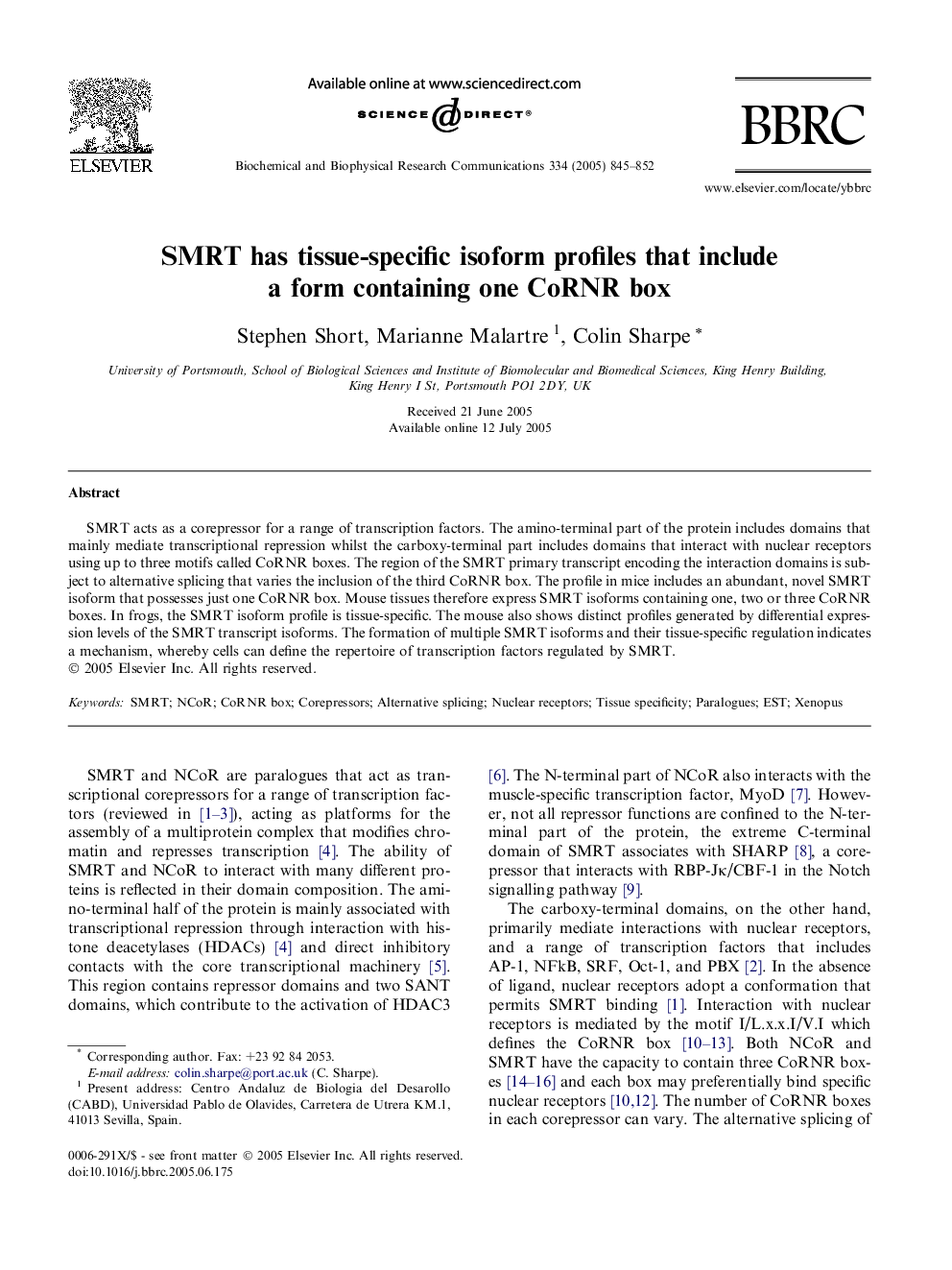| Article ID | Journal | Published Year | Pages | File Type |
|---|---|---|---|---|
| 10768395 | Biochemical and Biophysical Research Communications | 2005 | 8 Pages |
Abstract
SMRT acts as a corepressor for a range of transcription factors. The amino-terminal part of the protein includes domains that mainly mediate transcriptional repression whilst the carboxy-terminal part includes domains that interact with nuclear receptors using up to three motifs called CoRNR boxes. The region of the SMRT primary transcript encoding the interaction domains is subject to alternative splicing that varies the inclusion of the third CoRNR box. The profile in mice includes an abundant, novel SMRT isoform that possesses just one CoRNR box. Mouse tissues therefore express SMRT isoforms containing one, two or three CoRNR boxes. In frogs, the SMRT isoform profile is tissue-specific. The mouse also shows distinct profiles generated by differential expression levels of the SMRT transcript isoforms. The formation of multiple SMRT isoforms and their tissue-specific regulation indicates a mechanism, whereby cells can define the repertoire of transcription factors regulated by SMRT.
Keywords
Related Topics
Life Sciences
Biochemistry, Genetics and Molecular Biology
Biochemistry
Authors
Stephen Short, Marianne Malartre, Colin Sharpe,
